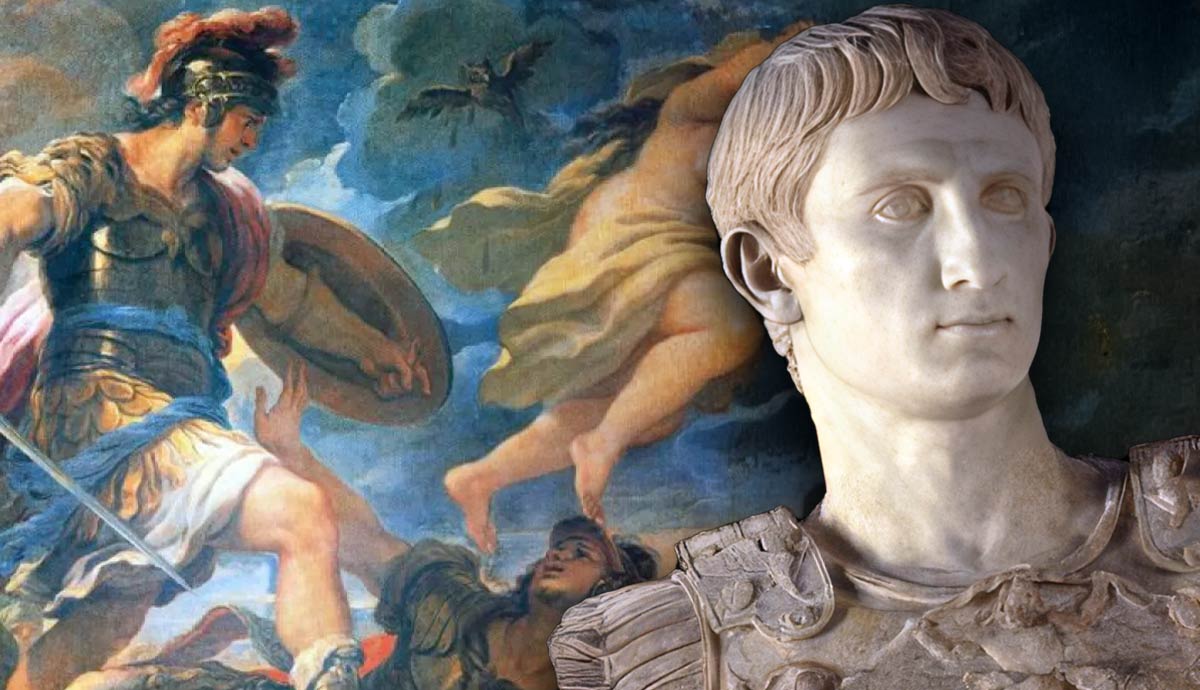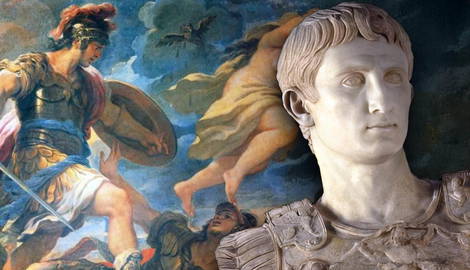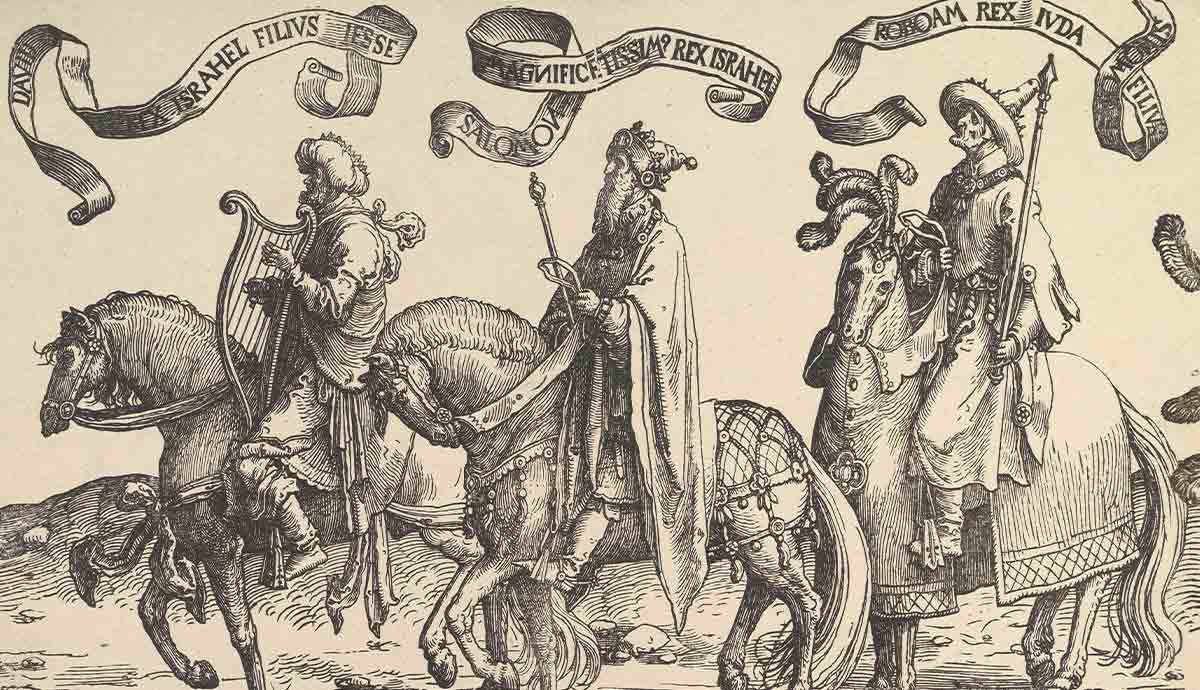
The Aeneid was written at the end of the 1st century BCE, in the aftermath of numerous civil wars, the fall of the Roman Republic, and the emergence of Augustus as the principal power in Rome. In this landscape, Augustus, the adoptive son of Caesar, strove to present himself as the bringer of peace, prosperity, and a new golden age. Virgil uses the Aeneid to highlight the importance of Augustus and create a blueprint for Roman values and identity. However, a closer look at the Aeneid suggests Virgil’s attitude towards Augustus and the Roman Empire may have been ambiguous.
Casting a Light on Augustus

The Aeneid glorifies Augustus, the Roman ruler at the time the Aeneid was written, by describing him and his family in a flattering manner and by associating Augustus with Aeneas, the hero of the Aeneid. From the beginning of the epic, in book one, Augustus’ family is referred to by Jupiter, the king of gods, who alludes to Augustus’ existence as being a direct consequence of Aeneas’ success in the Aeneid: “From the fairest stock shall be born a Trojan Caesar, destined to bound his rule by the Ocean and his fame by the stars – Julius, a name come down from the great Iulus.” Augustus’ lineage is emphasized by the repetition of “Ilius,” referring to Augustus’ adoptive father, Julius Caesar. This, by extension, provides legitimacy to Augustus through his familial connections. The Aeneid’s introduction, therefore, succeeds in presenting and associating both the hero of the epic, Aeneas, with the “hero” of the moment, Augustus.
Augustus is again noted in book six, which essentially comprises a literary parade of the “best men” of Roman history. Here, Augustus is described by Anchises, the father of Aeneas, as a messiah-like figure: “Here is the man whose coming you so often hear prophesied, here he is, Augustus Caesar, son of a god, the man who will bring back the golden years of the fields of Latium.” The pageant also describes Augustus’ family members. Caesar, his adoptive father, is described as the son of a god, and Marcellus, Augustus’ heir at the time, who sadly died aged only 19, is the “Sword of Rome.” Furthermore, Augustus is clearly presented as a continuation of Aeneas’ line because Caesar’s genealogy is clearly traced back in this scene of book six, to Aeneas’ son Ascanius.

Lastly, in book eight, Augustus is literally the centerpiece of Aeneas’ shield. The description of a shield is a custom found in other epics, such as the Iliad, because it is associated with heroism. On Aeneas’ shield, Augustus is depicted as the victor of the Battle of Actium against his foe, Mark Antony, in 31 BCE. This battle enabled Augustus to gain sole power over the Roman Empire. Augustus and his lineage are once again acclaimed: “from his radiant forehead there steamed a double flame and his father’s star shone above his head.” Beyond presenting Augustus as a central and military figure, Virgil’s description of the shield also legitimizes Augustus through his presentation of recent history. Indeed, Augustus is presented as being “backed by the senate and the people” in opposition to the exotic barbarism of Mark Antony, “who is backed by a foreigner’s wealth and international forces […] Every conceivable monstrous god, even barking Anubis points weapons at counter-blasting figures of Neptune and Venus.” In the Aeneid, Virgil, therefore, propagates the Augustan narrative that the battle of Actium was a fight against hordes of barbarians by civilized Romans rather than a civil war.
Aeneas: A Reflection of Augustus

Augustus is legitimized by being associated with Aeneas. They have many commonalities. For example, both have the same divine background and are from the same family. Both are founders, as Augustus presented himself as founding a new golden age for Rome, as can be seen in public art such as the Ara Pacis. Both are also famous for their “piety” and the importance they placed on paternal bonds. Augustus was regarded as his father’s avenger after Caesar was violently assassinated, which the scholars argue was widely considered legitimate since his filial duty (pietas) required it.
Furthermore, and perhaps more importantly, Aeneas is seen as a ruler despite himself. He “yields” to the people and the gods who desire him to rule, in opposition to his true wishes. Augustus also sought to be regarded as a man for whom rulership was a public service rather than a ruler servicing personal ambition. Indeed, in Res Gestae, Augustus’ self-written political testament, he described himself as being chosen by the people: “the people elected me consul.” Therefore, the mirroring of Aeneas and Augustus emphasizes how they are legitimate in terms of fulfilling their fate—as divinely chosen leaders—while still acting within the framework of Roman political beliefs, as servants of the people of Rome.
Encouraging Certain Values

The Aeneid also encourages values and a sense of identity for Romans. This promotes social cohesion and encourages behavior that suits the ideology of the new regime. For example, Aeneas’ reputed “piety” is also a trait that is a key means to control a population. Indeed, it is ultimately a behavior of respecting greater powers, whether it be a father, a god, a state, or an emperor. It is a positive way of describing a mindset that is in opposition to personal and intentional choice and decision, which would be necessary for challenging the status quo.
Another trait that is glorified in the Aeneid is self-sacrifice. Notably, the usual pattern for heroes in antiquity was that they had a great propensity to create suffering for their community through their heroic acts, for example, Achilles. Aeneas, in contrast, symbolizes the sacrifice of the individual for the many. Promoting self-sacrifice and associating it with glory and heroism therefore encouraged Romans to view whatever suffering the Roman Empire might cause them as being in alignment with their great national hero, Aeneas. Indeed, if a Roman man wanted to be a hero like Aeneas, he must be deferential and sacrificial. Those values are not necessary for individual happiness but for political security and success.
Roman Soft Power

Beyond personal values and behavior, the Aeneid also offered the Romans their own epic to rival those of the Greeks, who had created the Iliad and the Odyssey. Indeed, one could argue that the Aeneid is an example of “soft power,” presenting a new heroic model. Additionally, it presents the Romans as winners. In the Greek epics, Achilles dies, many Greek heroes are cursed by the gods, and Odysseus only returns to his original homeland after losing all his men.
In contrast, Aeneas survives along with the vast majority of his followers and creates a new empire. It is also important to note that Aeneas’ Trojans, who had been defeated by the Greeks in the Iliad, are also the ancestors of the Romans. It is they who win in the end. Therefore, the Aeneid can be perceived as a consecration of the Romans entering “the big leagues” both politically and culturally.
The Underworld: An Ambiguous Political World

The values Virgil encourages in the Aeneid are pushed to the extreme through the moral dimension of the underworld, where good morals and self-sacrifice are rewarded through living in Elysium. In contrast, those who sought only personal gain and went against the good of the state were condemned to perpetual punishment and enslavement. Arguably, Virgil is preying on human fears of the incertitude of the afterlife to create a moral order for the living, one which best serves the powers that be.
Alternatively, some scholars have argued that Aeneas’ route of departure from the underworld undermines all of Virgil’s flattery. Indeed, Virgil describes two exits from the underworld: “one is called the Gate of Horn and it is an easy exit for true shades, the other is made all in gleaming white ivory, but through it the powers of the underworld send false dreams up to the heavens.” Virgil describes Aeneas walking through the ivory gate, the gate of “false dreams.” This may suggest that despite all his flattery, Virgil is insinuating that Augustus and his empire harbor “false dreams.”
The Victims of Rome

Indeed, Virgil’s depiction of the Roman Empire is not all rosy. Time and time again, Virgil points us towards the victims of Roman success. Perfect examples are Dido and Carthage. Dido, the queen of Carthage, is presented as a sympathetic creature whose love for Aeneas and hospitality for the Trojans, the ancestors of the Romans, is betrayed by Aeneas. Her curse in book four foreshadows Hannibal’s threat to the Roman Republic and the subsequent Roman destruction of Carthage: “Arise from my dead bones, O my unknown avenger, and harry the race of Dardanus.”
By presenting the conflict with Carthage in such a light, Virgil chooses to show Carthage, the ancient enemy of Rome, as a victim unfairly treated. The second half of the Aeneid is set in Italy, where, once again, the Romans bring destruction to their host. This time, it was in the form of a war, mirroring the social wars that occurred less than 100 years before the Aeneid was written.
By emphasizing moments like these, Virgil is highlighting the injustices of the Roman Empire. However, one might argue that this is, in fact, a politically conciliatory move. Augustus created the Colonia Iulia Carthago in 29 BCE to reconcile the Carthaginians and Romans after the Punic wars. Similarly, at the end of the Aeneid, the fates of Italians and Trojans, the ancestors of the Romans, were joined when Juno, the defender of the Italians, reconciled with Jupiter, the defender of the Trojans. Virgil may, therefore, have been attempting to reduce the animosity and aggression between historic enemies by presenting former enemies of Rome as more sympathetic figures.
An Undermining Ending?

The Aeneid does not finish on a positive note. Aeneas loses his famous “piety,” forgets his father’s wise counsel of showing clemency, and is instead consumed by furor and kills a suppliant, Turnus. This loss of control is made all the more clear by Turnus’ pleading speech, which recalls the advice of Aeneas’ father. Turnus states: “You have seen me defeated and stretching out my hands to you.” Perhaps this is just a cautionary comment that Virgil leaves to Augustus, just as Anchises did to Aeneas: “You, Roman, remember to rule the people with power (these will be your arts), to establish the traditions of peace, to spare the defeated, and subdue the proud.”
Ultimately, despite whatever criticisms can be found, Augustus must have found the Aeneid to his liking. After all, Augustus refused Virgil’s posthumous demand that his manuscript of the Aeneid be burnt. Instead, Augustus chose to publish it widely. Indeed, the Aeneid has become a political testament, propagating a certain vision of Roman nationhood, identity, and values, far outliving the Roman Empire.









